Switch to Kundli matching Pro
Important: Please note that this kundli matching application is no longer maintained by team. Users are advised to use Kundli Matching Pro or Couple chemistry app for compatibility analysis.

Ashtakoot Milan is the most popular method in north India. In South India Dashkoot Milan ,which is a more comprehensive system, is in vogue. Here we are restricting ourselves to Ashtakoot Guna Milan system.
The matching is based upon natal Moon positions of the boy and girl. Lagna is not given importance in Ashtakoot Milan / Nakshatra Melalpak. Since marriage is directly concerned with the mind whose significator is Moon, hence Moon chart is the base for matching of horoscopes.
Eight factors are considered as given below :
The above factors are in increasing order of importance and accorded values or Gunas also in the same order. One mark or Guna is allotted to Varna, 2 to Vashya, 3 to Tara and so on upto 8 to Nadi factor. Thus total number of Gunas are
1+2+3+4+5+6+7+8 = 36
Gunas or Marks are allotted to the couple factor wise and then totalled. Thus a couple can score maximum upto 36 marks.
The Rashis of the Boy and the Girl is decided from their respective Birth Nakshatras and the Nakshatra charan or pada.
Varna represents the working attitude and capacity. The bridegroom’s capacity needs to be higher than that of the bride for smooth running of the family.
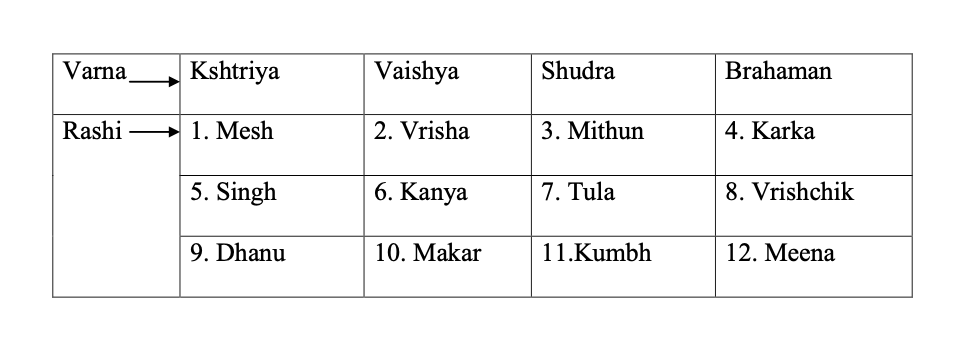
Rules for matching
Brahaman Varna is supposed to be of the first order, followed by Kshatriya, Vaishya and Shudra. Varna of bridegroom should be superior or same as of the bride for scoring one point or Guna. Where Varna of bride is superior, no point is given.
Vashya implies within control. This Koot considers the nature of various
zodiac signs to find out which sign can control which other sign. The signs or Rashis are divided into 5 groups viz. (Below given are the sign number and part signs as degree range in some case)
Rules of Matching
Full two points are given if the bride and bridegroom belong to the same group. Where bride’s rashi is Vashya (controllable) to bridegroom’s rashi, one point is given. Where bride’s rashi is Bhakshya (eatable) to bridegroom’s rashi, 1⁄2 point is given.
Vashya (controllable) and Bhakshay (eatable) consideration is decided on the basis of the nature of signs. For example human or Dwipad signs can control all other signs except Leo, and for them Jalachar signs are Bhakshya (eatable).
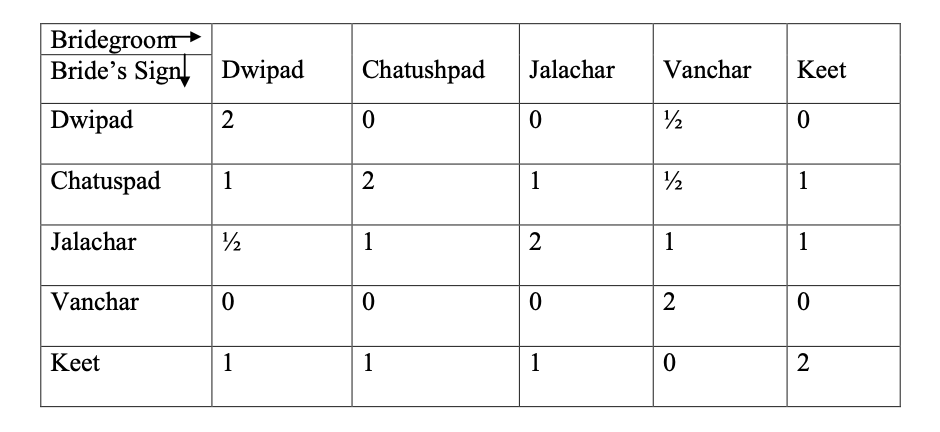
Taras are of 9 types as follows.
The 3rd Tara Vipat, 5th Tara Pratyari and 7th Tara Vadha are inauspicious. Tara contains maximum 3 points or Gunas.
Rules of Matching
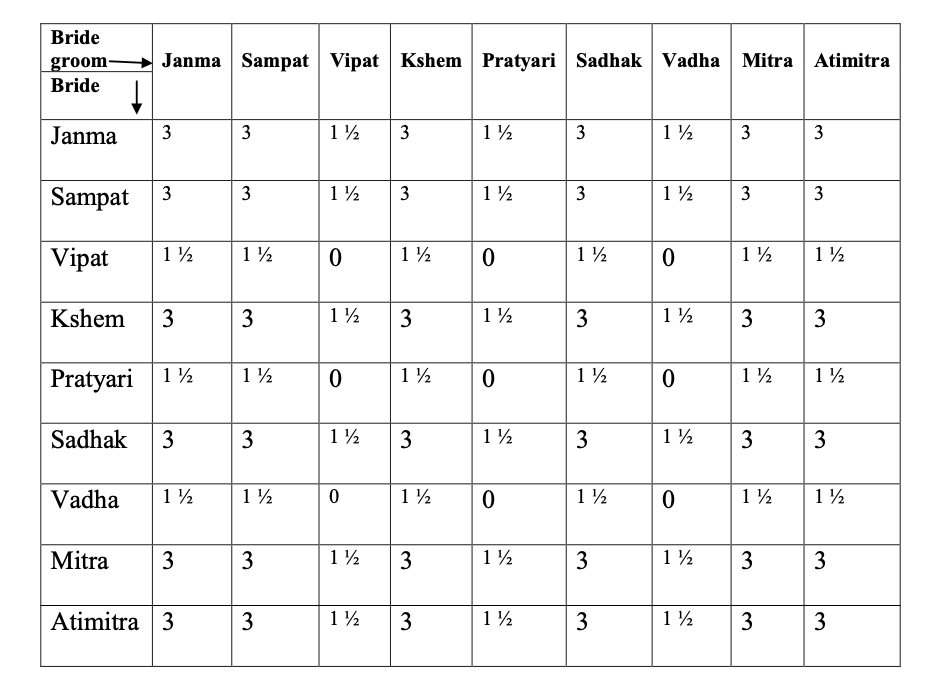
There are 14 yonis based upon 28 Nakshatras. The extra Nakshatra is Abhijit
which falls in 4th Charan of Uttar Shada Nakshatra. Two Nakshatra represent one Yoni. Yonis of bride and bridegroom should not be inimical to each other. The yonis allotted to different Nakshatras and their bitter enemy or inimical yonis are as per the Table below:
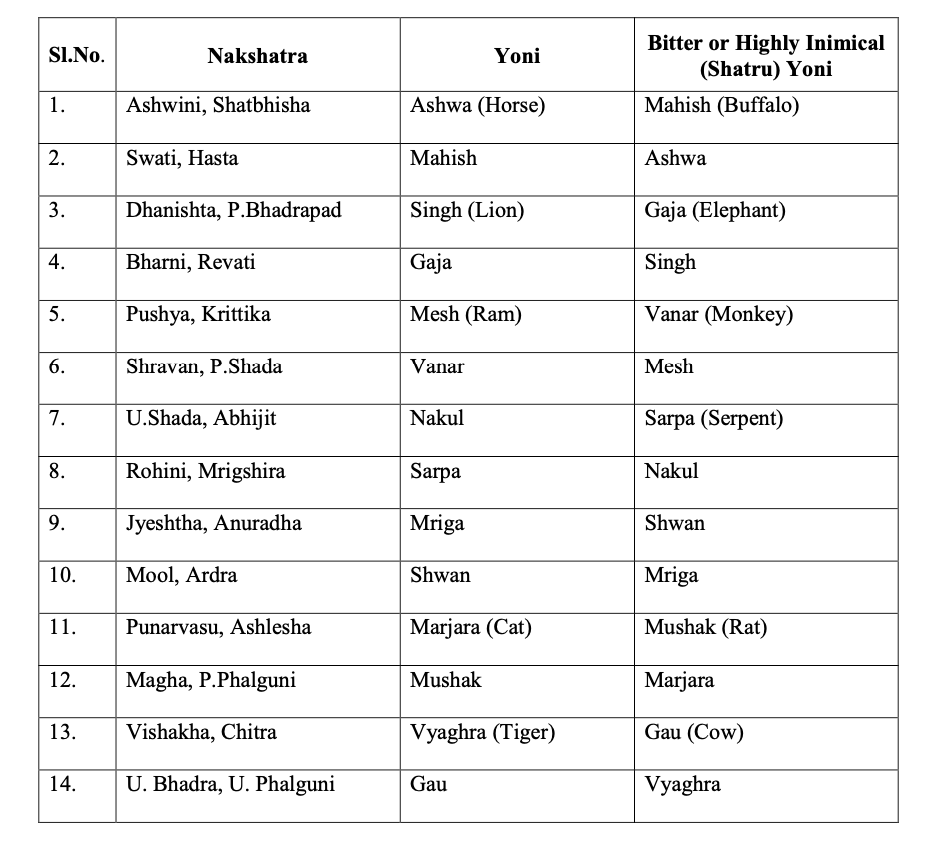
Rules for Matching
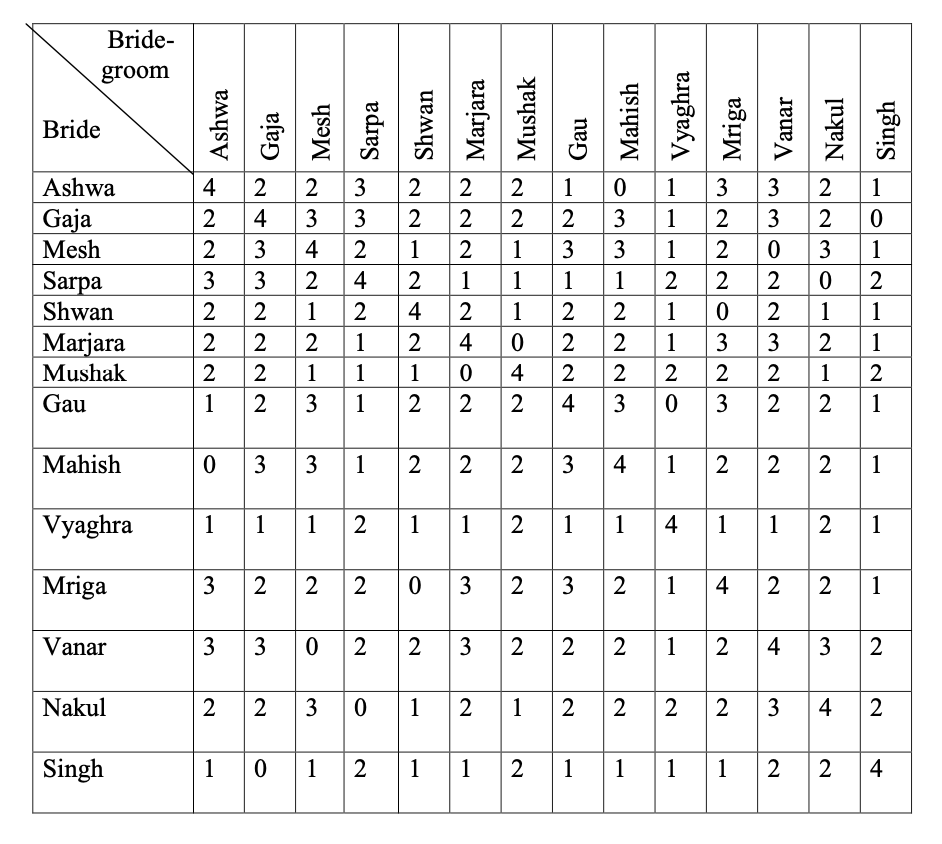
This is very important because if the Moon rashis and the rashi lords are same or they are friends then there are good chances for a successful marriage between two unknown persons.
Table for Natural Friendship of Planets
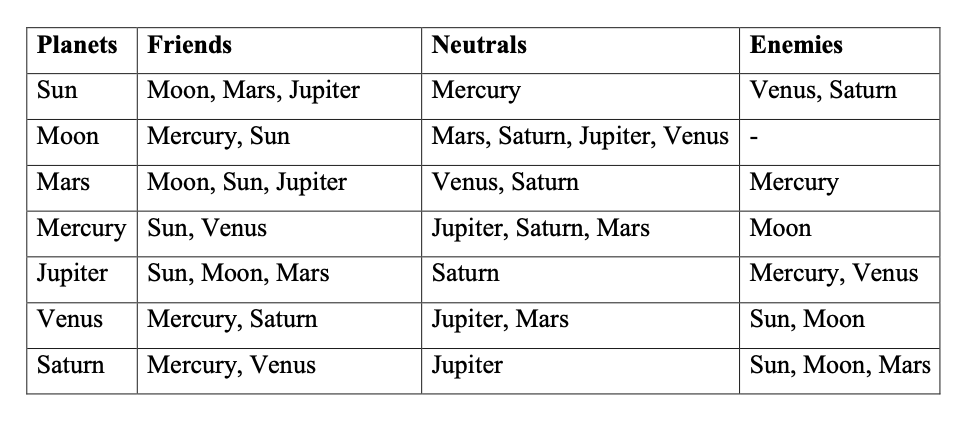
Rules for Matching
Take the lords of natal moon signs of bride and bridegroom and allot marks as follows:
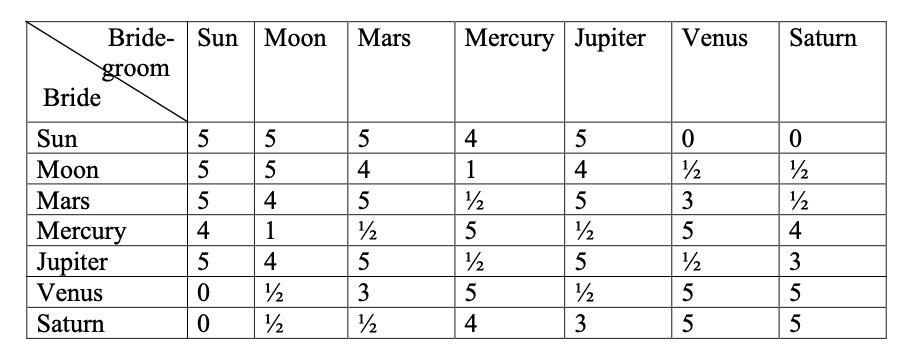
There are 3 Ganas as follows.
Three of them represents Satwa, Rajas and Tamas Gunas, respectively.
The Gana is identified by the birth Nakshatra. For this purpose the 27 Nakshatras have been divided into 3 groups as follows :-
A Deva Gana native is more humane and display qualities like passion, patience, love, empathy, sympathy and helping nature.
A Manushya Gana native is alert to self interest, ambitious, social, courageous and far sighted.
A Rakshasha Gana native is cunning, shrewd, and causes harm to others for self gain.
Rules for Matching
This is taken as Mahadosha since it carries 6 points.
Cancellation of Gana dosha
Relative positions of Janma rashis of bride and bridegroom is considered under Bhakoot matching. The relative positions can be of 6 types as follows.
1/7, 2/12, 3/11, 4/10, 5/9, 6/8
Out of the above 2/12, 5/9 and 6/8 Bhakoot positions are inauspicious and
the rest are auspicious.
2/12 or Dwirdwadash position is bad because post marriage excessive
expenditures would create financial imbalance in the life of married couple.
5/9 or Navpancham position is bad for marriage because the partners may not enjoy physical relation and may devote their time to religious activities. This would hamper birth of children, which is the main purpose of marriage, in many instances.
6/8 or Shadashtaka position is bad because 6th place denotes enemity and 8th death. Married life would be full of strifes, dispute and bitter relations which may even culminate into suicide and murder.
Rules for Matching
If the Bhakoot pertains to 2/12, 5/9 or 6/8 positions, no point is given. For
same rashis, 1/7, 3/11 and 4/10 position full 7 points are given. When bride and bridegroom have same Janma Rashis it is considered benefic but in that case either their Nakshatras should be different or if Nakshatra is common then Nakshatra ‘charan’ should be different otherwise this would create a Nadi Dosha.
Cancellation or Exceptions of Bhakoot Dosha
(a) 2/12 or Dwirdwadash Position
(b) 5/9 Navpancham
(c) 6/8 Shadashataka
(d) 4/10 position
(e) 3/11 Position
(f) 1/7 Position : Sama - Saptaka
There are three Nadis as follows.
Birth in a particular Nakshatra is the deciding factor as per the Table given here.
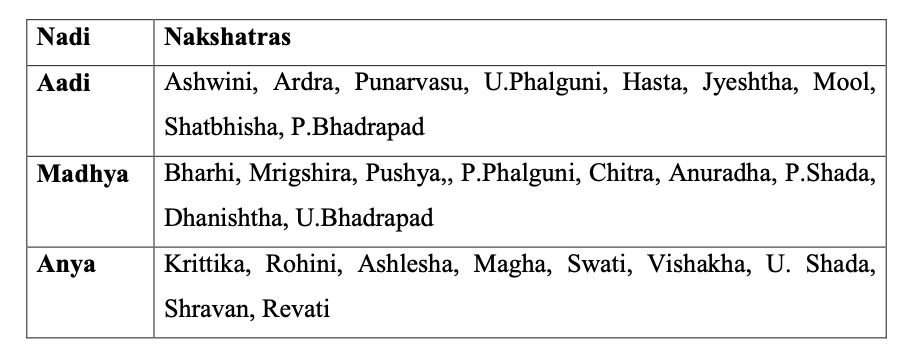
Rules for Matching
Exceptions or Cancellation of Nadi Mahadosha